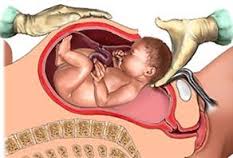Approaches to birth have changed greatly in time. With the discovery of “painless labour”, giving birth is no more a very painful incident in the minds of future mothers. Thanks to technological advancements, improvements in surgery techniques and equipment, decrease in anaesthetic complications, caesarean section has become more and more widespread. Today, even among doctors there is a debate about which birthing method is prevalent.
The most common issue that keeps the minds of future mothers and fathers busy, especially towards the final parts of pregnancy, is how the birth should be.
Major factors that play a role in deciding whether regular or C-section birth:
- The family’s (couple’s) (especially the mother’s) desire
- Doctor’s decision, depending on the life quality and vitality of both the mother and the fetus whom have been in close watch during pregnancy
- The approach of the institutions involved in labour
Regular (Vaginal) Birth
It is a physiological occurrence. In a few hours after labour, the mother can go back to her daily activities and breastfeed her baby in a very short time. Thus, it is stated that the emotional touch starts very early between mother and the baby and as a result the bond becomes stronger. Additionally, the baby’s lungs (respiratory system) become ready for breathing sooner.
Possible complications
Natural birth requires specific follow up watch and readiness for sudden problems. The baby might get stressed and his heart rate might slow down. After the head is out, the baby’s shoulders might get stuck at the mother’s pelvic bones. Preparations to move to C-section during regular birth should be made since this switch might be vital during any moment of labour. Although very rare, due to lengthened labour, the baby might suffocate (be left without oxygen) and mental and motor functions might be damaged. During a quick birth or a birth which involves a bigger baby, there might be ruptures. This might, later on, lead to unwanted urinal discharge or other forms of discharge through the vagina. In order to avoid such complications, the best way to follow is to go through the process in a hospital. The doctor’s warnings during labour should be carefully considered and the patient should be ready to accept the idea that the method of birth might be changed in order to avoid any harm to the baby or the mother.
The time and place of labour in regular birth cannot be known beforehand. The fear that labour may begin in unwanted places or circumstances, not being able to make it to the hospital or reach the doctor in time pushes candidate mothers towards C-section. Likewise, the fear of a long and painful labour also pushes them towards C-section. Painless birth, which has become popular today, has diminished this fear to a certain extent.
CAESAREAN SECTION (C-SECTION)
Until very recently, C-section was considered as a complication not as a way of giving birth. However, in many ways C-section is a delivery method which might prove to be a life saver both for the mother and the baby. The trauma of birth, regarding the baby, has been lowered to the minimum. Many undesired surprises that might occur during regular (vaginal) delivery, have been avoided/decreased via C-section.
C-section is the only choice in some certain cases:
- Specific mismatches with the baby and the birth canal (head-pelvis mismatch, baby is big, narrow canal walls)
- Hypoxia symptoms during labour (Fetal distress),
- When the baby doesn’t take the right position towards the birth canal (sideways, foot, back),
- When the mother-to-be has had uterine operations such as caesarean section or myoma surgery before,
- When placenta previa, or ablatio placenta are observed,
- Weakness (insufficient uterine muscle tension to provide delivery,
- When labour has to be terminated immediately (ex: severe preeclampsia, eclampsia),
- When labour/delivery doesn’t proceed as anticipated.
In recent years, there has been a huge increase in C-section births. One of the main reasons for this is that the mothers want to have C-section births. Mothers are afraid of vaginal/regular birth/delivery. After C-section, the mother gains consciousness and feeds the baby in 2-3 hours and the patient can go back to her daily life in 4-5 days. Sometimes, pain and infection may be experienced around the C-section stitches. C-section is a surgical application after all. Just like every other surgical operation, it involves risks. The bladder and bowels and all other neighboring organs should be protected, the appropriate surgical technique, use of antibiotics for protection purposes, choosing epidural instead of general anaesthesia can reduce the risks to a minimum.
The trio, Family (couple) – baby – the specialist doctor make the decision about the type of birth.


